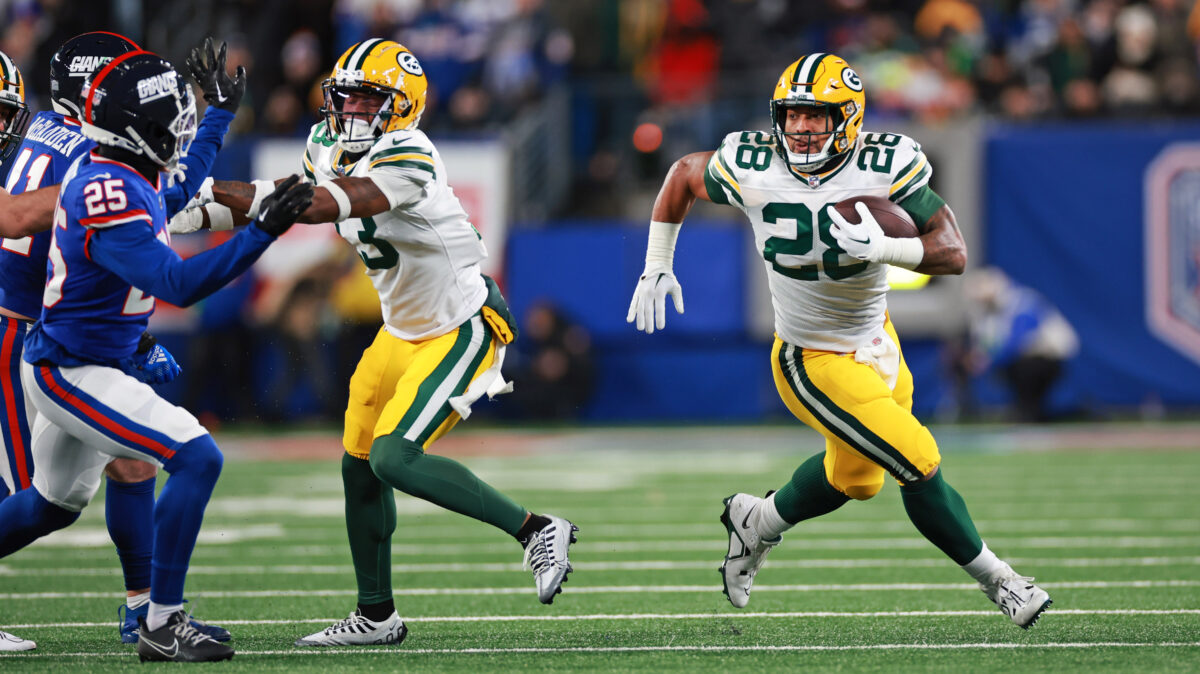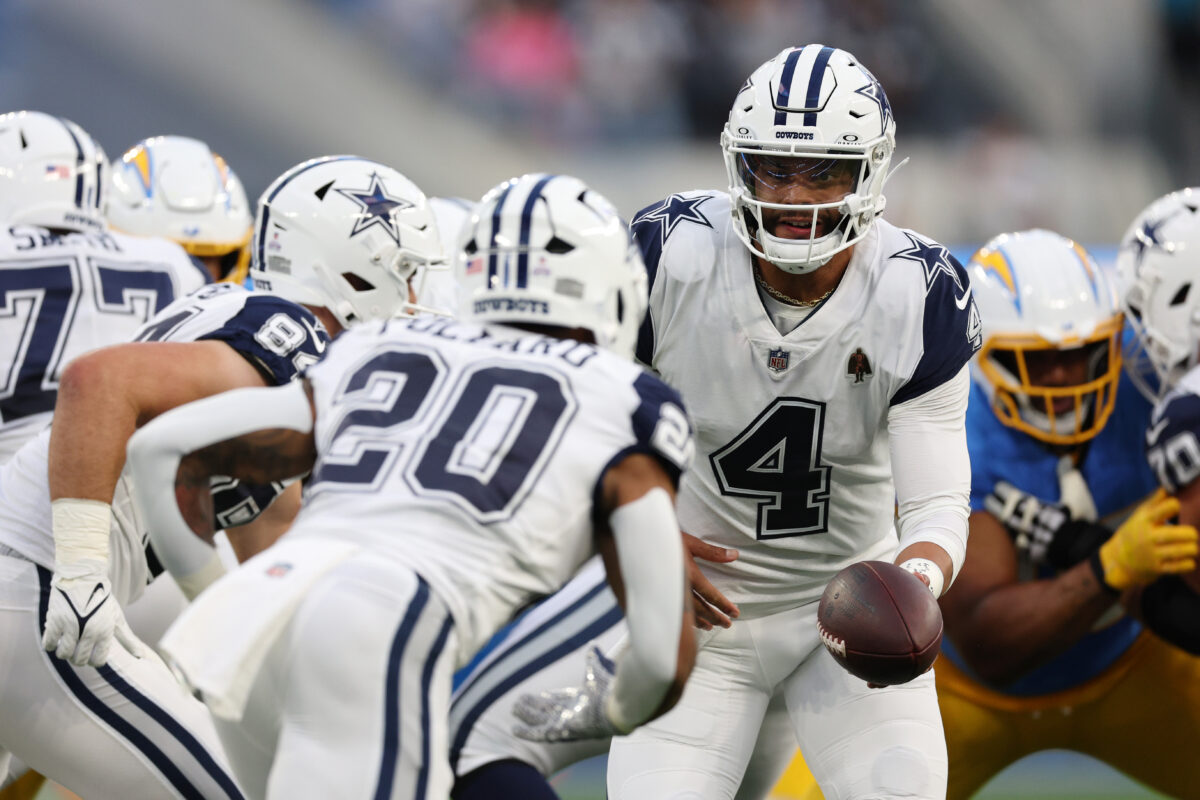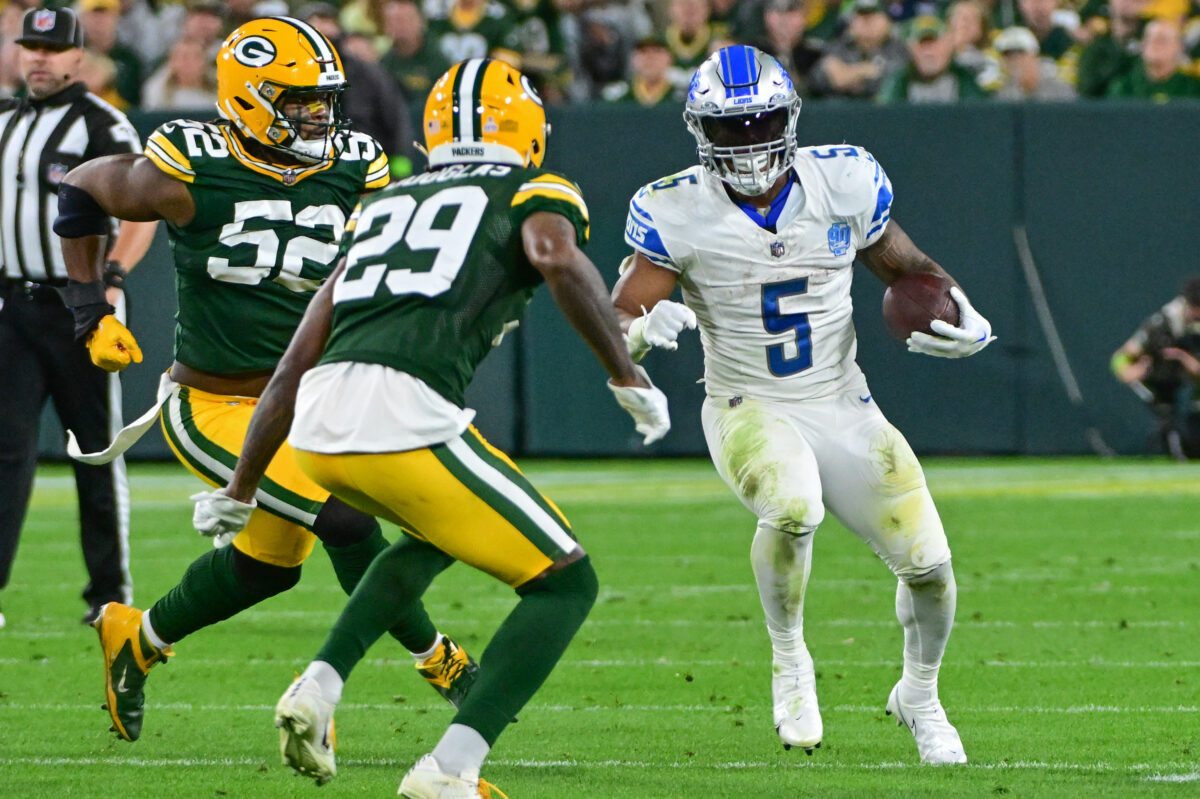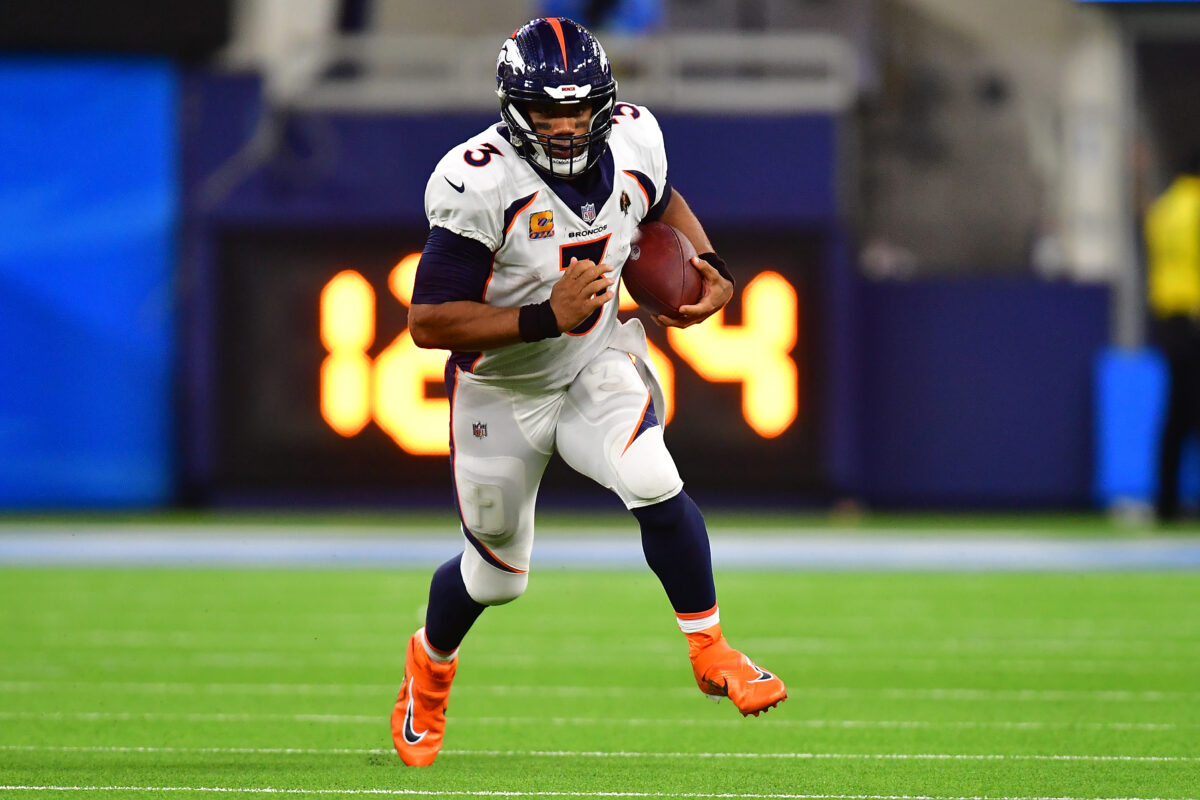The Green Bay Packers run game was again finding success between the tackles and could have been relied upon more heavily against the New York Giants.
Now, it’s not as if the Packers didn’t run the ball or gave up on it. They finished the game with 23 non-Jordan Love carries, with AJ Dillon and Patrick Taylor totaling 19 of those. However, there was the opportunity for it to have played a bigger role with how the game unfolded and the fact that even when losing, Green Bay was never down more than one score.
On 15 carries, Dillon averaged a modest 3.5 yards per carry. Not great by any means, but he was generating were positive plays. Patrick Taylor would carry the ball four times and total 30 yards, an average of 7.5 yards per attempt. Collectively, the two averaged nearly 4.5 yards per attempt between the tackles.
“I thought all-in-all, for the most part, if you look at the run efficiency, I think we were pretty solid,” said Matt LaFleur on Tuesday. “I think there were some more opportunities out there where we could have ran the ball, especially downhill runs seemed to be pretty effective. We were getting some movement up front and I thought our backs were running hard.”
As we saw against the Kansas City Chiefs last week, and in general over the last month, success on the ground doesn’t have to include ripping off 10-plus yard gains regularly. Even regular rushes at four or five yards a pop are effective by keeping the offense ahead of the sticks and forcing the defense to defend both the run and the pass on a given play. It also takes some of the playmaking burden off the passing game by setting up play-action and downfield opportunities.
This is a New York defense that entered Sunday’s game allowing 4.8 yards per carry as a team and ranked 29th in ESPN’s run-stop rate metric. In recent weeks, New England rushed for 147 yards (4.7 yards per rush), Washington 174 (6.1 yards per rush), and Dallas 168 (5.1 yards per rush).
That, coupled with the fact that the Green Bay passing game was disjointed and struggled to find consistent traction for much of the game, perhaps should have resulted in Matt LaFleur leaning more heavily on the run, rather than Jordan Love throwing nearly 40 passes.
Along with running between the tackles, the Packers continued to be very active in getting Jayden Reed designed touches behind the line of scrimmage. Reed finished the game with four carries that came with mixed results. When Reed had the ball in these instances it was either boom or bust with a big gain or nothing at all. In part that was due to missed blocks, but as LaFleur said on Tuesday, the Packers have to be more picky about when they use those play calls as well with New York all over a few of those runs.
“There’s going to be plays that work and some that don’t. Some of the jet sweeps, there’s an option for a handoff or you flip the ball or hand the ball off to the receiver. Obviously it worked the first drive. It always comes down to how wide is that end. A lot of the times, what is the structure behind it? I think we’ve got to be a little bit more picky when we do that.”
Even with some success on the ground, the Packers leaned on play-action less than what they had been during their recent stretch of strong play. From Weeks 9 through 13, nearly one-third of Love’s pass attempts came off play-action and ranked eighth in dropback rate. In Week 14 against New York, he and the offense were below-league average in terms of usage at 22 percent, according to PFF.
It’s not a coincidence that as the run game has been picking up steam, so has the passing game. During the Packers four game losing streak, as a team, they averaged just 4.1 yards per rush. But in the previous five games before New York, the Packers were up to 4.7 yards per attempt, including any scrambles by Love.
With all that said, this isn’t to say that a more balanced run-pass mix would have changed the outcome of the game—who knows? This is an element for the Packers that is still very much a work in progress. Green Bay’s run game has been more effective, but still far from dominant. However, as LaFleur acknowledged, there were more opportunities out there to run downhill and it could have helped shoulder some of the burden on offense with the passing game sputtering.
“I think there was some good,” added LaFleur. “I think there were some things we could have done a little bit better. Give them credit, there’s some guys inside that are big, physical dudes. Obviously, Dexter Lawrence, I think he’s as good as anybody in this league. Some of the finishes you’d like to be a little bit better. We fell off some blocks late.”









